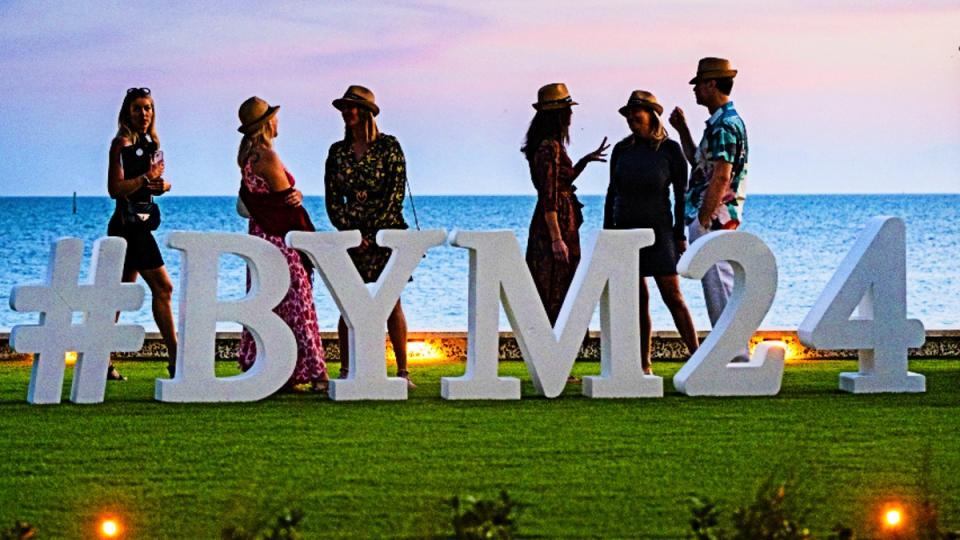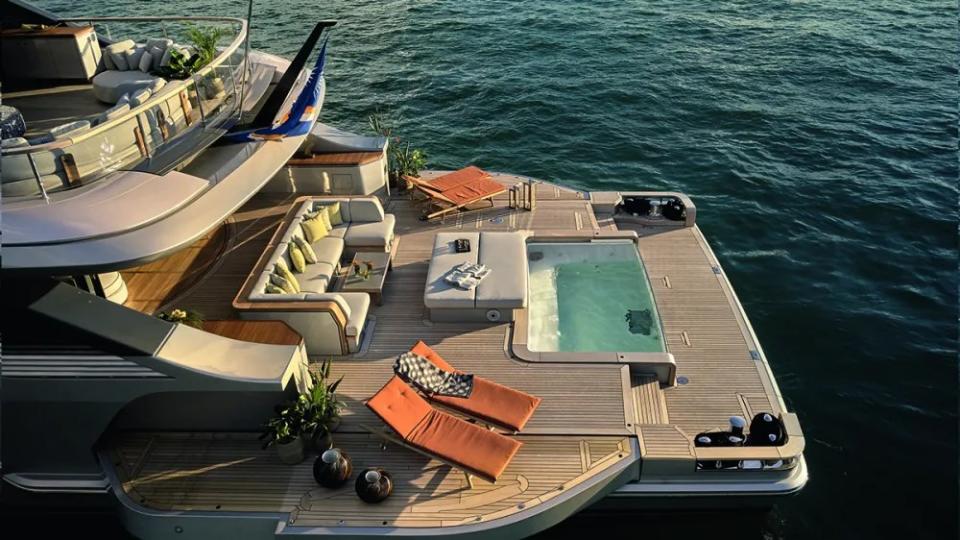Ten years from now, Millennials will have taken over the superyacht world. At least that’s the forecast by several experts who are seeing ages of yacht buyers trending younger.
Nearly everywhere in luxury, in fact, buyers are seem to be getting younger. The average age of a Rolls-Royce owner has dipped to 42 years old, and even farther up the ladder of lavishness, superyacht owners are typically around 50 years old. Not only are these yacht owners younger, they also are often new to the industry, jumping into yachting with fortunes largely made in tech.
More from Robb Report
That trend is expected to continue, according to research from Italian yacht builder Rossinavi and the University of Monaco, with the average age of superyacht buyers decreasing 10 to 15 years over the next decade. That could make Millennials the primary buyers of superyachts.
The topic of younger buyers is a constant discussion in shipyard boardrooms and among designers looking to modify their designs to this changing market. It was also one of the topics at the recent Yachtmaster event in Key West, hosted by Benetti Yachts. Benetti sponsors Yachtmaster events twice a year (the European edition was in Budapest last month) to brief captains and other professionals on new trends in the superyacht industry.

“We have been doing this event for 24 years now,” Benetti Americas manager Nick Bischoff told Robb Report. “The intent is to continue to build relationships with influencers of our current and prospective owners. In the beginning that meant mostly captains, but it’s expanded to include surveyors and owners’ reps, too.” The ultimate goal, says Bischoff, is for participants not only to network, but “put their heads together to create an ever-improving onboard experience both for owners and crew.”
Many seminars focused on the concept of onboard lifestyle, which most brokers and shipyards see as a primary driver for purchasing a yacht. Benetti’s head of product, Sebastiano Vida, also spoke about how lifestyle influences new designs in the yachts.
Benetti’s Oasis Deck, an extended platform near the stern of the yacht, and its even newer Veranda Deck, which creates an open space where an interior salon would be, were two examples of how design is changing to meet the needs of a new customer. The brand’s 121-foot 40M Oasis has proven popular since it was launched in 2020, a larger 131-footer came out last year, and the Veranda deck will be showing up on Benetti’s new 148-foot Motopanfilo.
But Jason Dunbar, a broker and appraisal surveyor with Vessel Value Survey, recommended tough love to the brokers. His discussion about managing expectations for newbie owners included advice about being “realistic” with owners who are flush with cash, but might be new to the superyacht world. If an owner wants a brand-new 120-footer with a crew of six, but has a budget of $8 million, the broker is the one who needs to break the bad news. “A good broker has to tell people ‘Listen, that’s just not going to happen,’” says Dunbar. “That will save a lot of headaches down the road and will hopefully keep a client in boating for the long term.”

A new buyer is often coming off a one-week charter that was magical: perfect weather, a well-oiled boat, and a crew looking forward to a little R&R after hustling all week for the charter guests. “It’s relatively easy to make things work like that one week at a time,” says Dunbar. “But a new owner who wants to use their boat for 10, 15, or 30 weeks, that’s a totally different thing. You may have to tell them they need to hire two crews and rotate them—which will be news to them.” He said that overworking the crew will “burn through humans.” The crew will be miserable, he says, which will make the boat not live up to the owners’ expectations. “The next thing you know these new owners will be long gone from yachting.”
Fraser Yachts CEO Anders Kurtén sees the new buyers as a boon for design creativity in an old-school industry. “It starts with a piece of paper,” he says. “We sit down and start designing these boats for younger clients and we see similar trends. Basically they all want to live their shore-based lives on a yacht.”
Owners of the recently launched 387-foot Celerius wanted just that and chose Paris-based architect Joseph Dirand, who had never designed a yacht before. He broke loads of norms, including an interior with huge open spaces and end-to-end views throughout the vessel.
The segmented and often claustrophobic interiors of many current superyacht designs, says Dirand, just doesn’t float with the new generation. “Young owners’ preferences are honed by hospitality and a knowledge of architectural trends,” he says.

Because of that, wellness centers have become focal points of design. As moguls like Jeff Bezos and Mark Zuckerberg have made clear as of late, having six-pack abs in middle age is the new Lamborghini. These new owners expect their boats to be designed with beach clubs with gyms, saunas, massage areas that allow owners and guests to work out or relax, amidst warm sun rays and luscious sea breezes.
Kurtén also pointed to green tech as key for the new generation of clients. “We’ve hit a point where a 150-foot sailboat can go across the Atlantic without burning a drop of fuel. And motoryachts can function on battery-only mode, at least when they are close to port,” he says. “That’s important to these new clients—they want to be green. A few years ago that was something you said at a cocktail party, but today it’s a reality for a lot of buyers.”
Peter Selivanoff, senior yacht service manager for Fraser, also spoke about how owners are seeking highly specialized crews who can perform multiple functions across the yacht.
Navigating these new realities is an important part for the industry to future-proof itself in the competitive realm of ultra-luxury products. This is a place where youth may not spring eternal but, at least for now, it reigns supreme.
Best of Robb Report
Sign up for Robb Report’s Newsletter. For the latest news, follow us on Facebook, Twitter, and Instagram.
Click here to read the full article.
Credit: Source link
